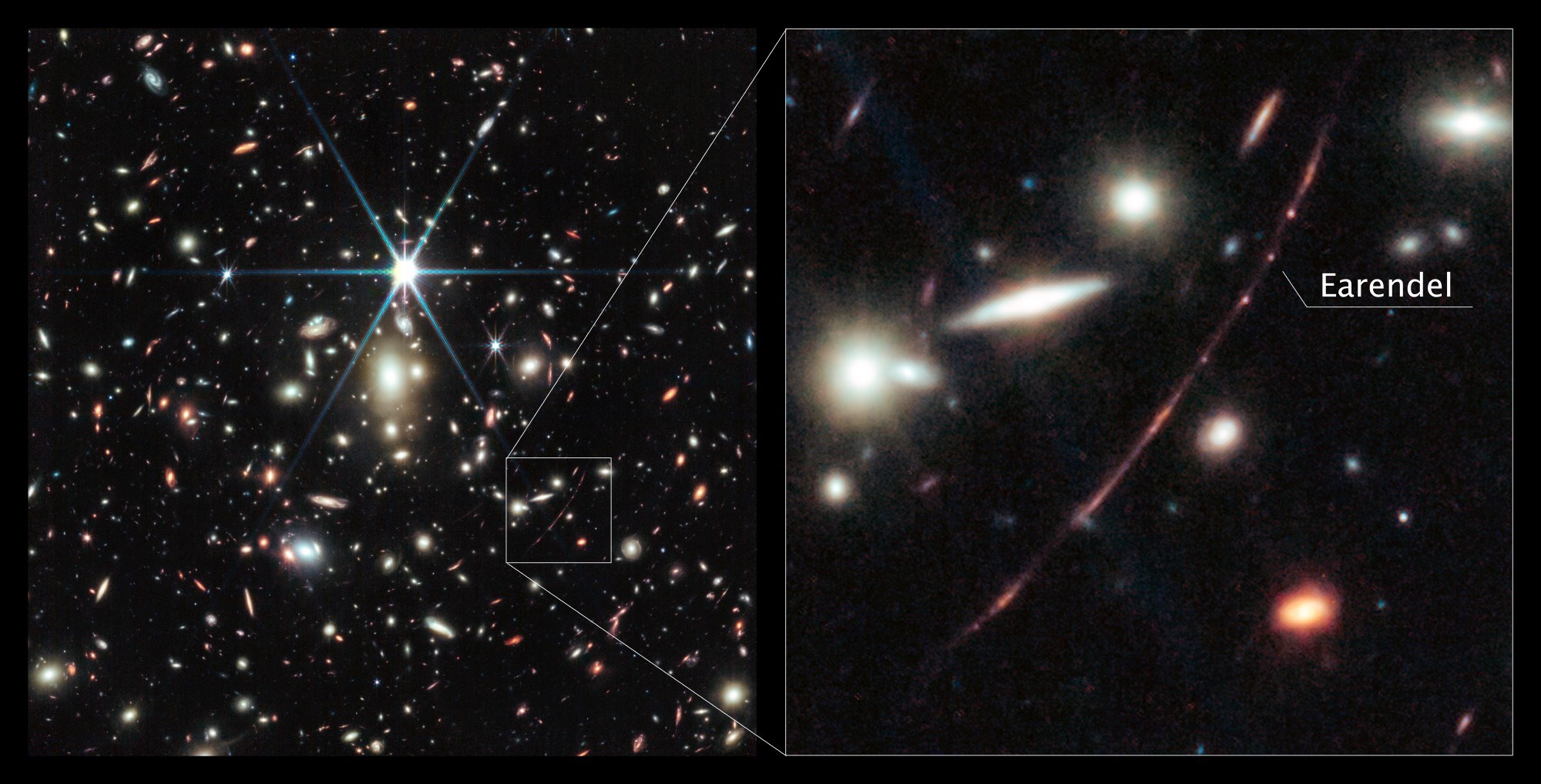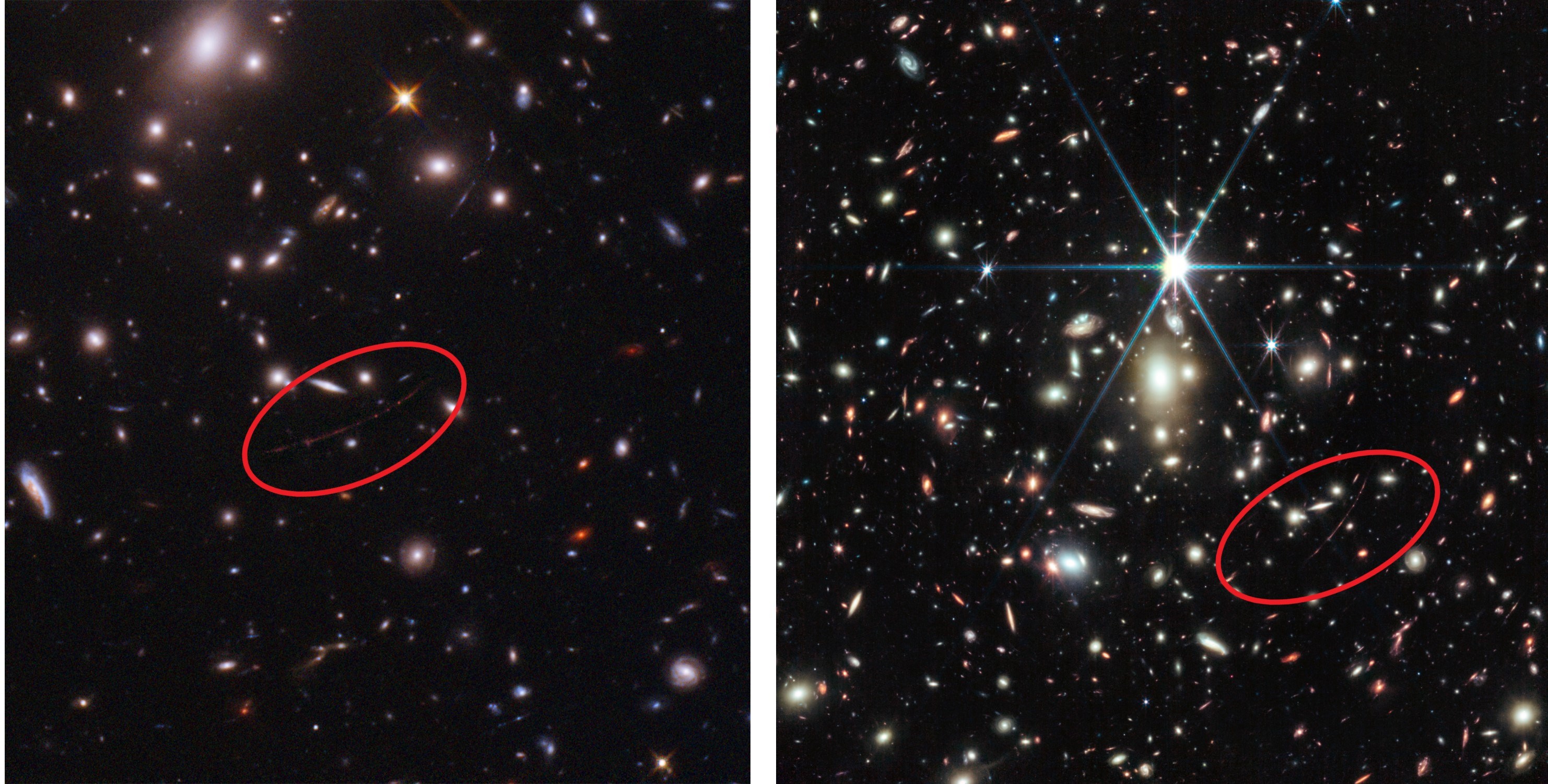 This image above, taken by the NIRCam (Near Infrared Camera) of the James Webb Space Telescope (JWST or Webb), depicts a large B-type star known for its much higher temperature than the Sun. State-of-the-art space observatory Webb has managed to reveal a stunning image of the most distant star in the early universe.
This image above, taken by the NIRCam (Near Infrared Camera) of the James Webb Space Telescope (JWST or Webb), depicts a large B-type star known for its much higher temperature than the Sun. State-of-the-art space observatory Webb has managed to reveal a stunning image of the most distant star in the early universe.Webb observed the most distant star
The Hubble Space Telescope first detected this star, called Earendel, in the Sunrise Arc galaxy last year. Earendel is considered the most distant star ever detected, existing nearly a billion years after the Big Bang.
In the image below, the image on the right is Webb, and the left side is Hubble.
 Hubble was able to discover Earendel with the help of a natural cosmic phenomenon called gravitational lensing; This phenomenon occurs when a large foreground celestial body acts as a lens, disrupting the space-time continuum and amplifying light from a more distant celestial body.
Hubble was able to discover Earendel with the help of a natural cosmic phenomenon called gravitational lensing; This phenomenon occurs when a large foreground celestial body acts as a lens, disrupting the space-time continuum and amplifying light from a more distant celestial body.NASA explains the observation in its official statement: “Both Hubble and Webb were able to detect Earendel thanks to the lucky alignment of the large galaxy cluster WHL0137-08 behind a crease in space-time. It’s large enough to warp the fabric of space, creating a magnifying effect and allowing astronomers to look at the cluster like a magnifying glass.”
comrade of Earendel
NASA states that most massive stars like Earendel have a companion in their binary systems. However, the companion star is difficult to observe because the proximity of the two stars makes them appear “indistinguishable” in the celestial expanse.
Webb’s NIRCam also provided new insights into the galaxy where the star is located, known as the Sunrise Arc. This galaxy has the distinction of being the most intensely magnified discovery of the first billion years of the universe. Webb observed a young star forming region in this galaxy, as well as older, already developed star clusters just 10 light-years across.
According to what has been stated, this gravitationally bound star cluster probably still exists today. This observation provides important insight into the emergence of globular clusters in our own Milky Way galaxy about 13 billion years ago.
A million times brighter than the sun
The image, produced by Webb’s NIRCam instrument, depicts a giant B-type star that is said to be twice as hot and a million times brighter than the Sun. The Sun is a G-type star with a surface temperature of about 5,500 degrees Celsius. Astronomers are now evaluating data on the Sunrise Arc galaxy and Earendel collected by Webb’s NIRSpec (Near Infrared Spectrograph) instrument. The in-depth review will provide a variety of measurements, including estimates of the galaxy’s precise composition and distance.